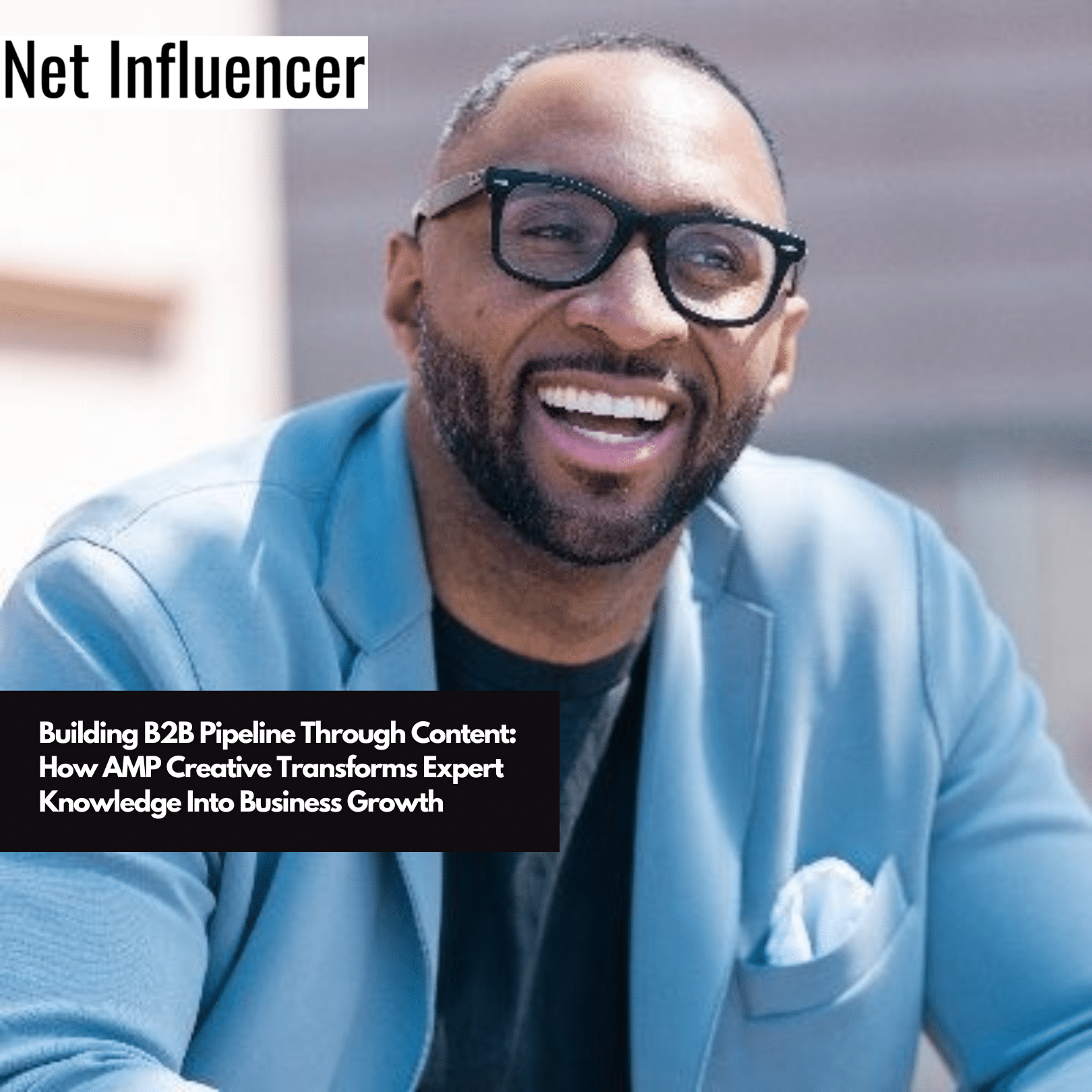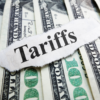Technology
Building B2B Pipeline Through Content: How AMP Creative Transforms Expert Knowledge Into Business Growth
B2B companies face mounting challenges with traditional marketing approaches. Cold outreach yields diminishing returns, content saturation makes standing out difficult, and sales teams struggle to reach key decision-makers. Morgan J Ingram offers a fresh solution: transforming subject matter experts into content creators to generate measurable pipeline results.

From SDR to Content Strategy Pioneer
Morgan began his career as a sales development representative (SDR), experiencing firsthand the limitations of conventional outreach methods.
“I started creating content on LinkedIn in 2016. I was an SDR, and I was just sharing my best practices, my story, and my whole journey,” Morgan recalls. This initiative led to training roles at leading tech companies, including Google, Slack, and Snowflake, where he identified a significant shift in market dynamics.
“I saw that the shift in the market was shifting more towards companies creating content, partnering with influencers, and creating internal influencers,” Morgan explains. “And that’s what I do today at AMP. We empower expert-driven content by internally creating influencers to drive the pipeline and partnering them with influencers.”
Morgan founded AMP Creative after recognizing a fundamental challenge in B2B marketing: generating a pipeline through compelling content. “The biggest problem that we’re solving and why people are tapping influencers and want to create content is to generate more pipeline,” Morgan explains. “As I worked with the bigger tech companies like the Googles and the Zooms of the world, they already had name recognition, which made their prospecting a lot easier.”
“The gap in the market was the education on how to create that content that people will tune into and want to be consumed that will lead to the pipeline you’re looking to generate,” he adds. “It was just harder for people to get a pipeline. So I said, okay, well, the best way to do that now is to create really good content.”
The Two Pillars of AMP’s Methodology
1. Strategic Brand Partnerships
AMP prioritizes sustained, integrated collaborations over one-time engagements. “We believe in not just, okay, not one post and see you later. We believe in long-term partnerships with the brands we work with,” says Morgan.
His work with HubSpot exemplifies this approach: “I’m doing events for them, I’m still doing LinkedIn posts there, I’m helping with the blog posts, I’ve done in-person talks with them, I spoke at Inbound. It’s an integrated way of thinking about brand partnerships.”
“It’s not just, ‘Oh, I’m just posting for you one time, see you later.’ I also use the tool myself, so I’m also a subject matter expert in that realm,” Morgan explains.
2. Internal Influencer Development
AMP specializes in developing company experts into content creators. “Executives don’t like the word influencer sometimes,” Morgan notes. “So the way that we switch it is, say, subject matter expert, and we’re helping them become the creators of their brand.”
This development follows a structured approach: “We have them come out, we do a shoot with them, we take the content we’ve done from that shoot and then help them create that content on LinkedIn and then help them also produce more content on LinkedIn from their voice,” Morgan explains.
“We have a unique production team that has done a lot of work with the Super Bowl, Sony, etc. So we have that background on that piece,” he adds.
The Four-Step Implementation Process
Morgan’s systematic approach begins with deep strategic planning.
“The first part is like the strategy. This is like your authority building,” he explains. “What exactly do we want people to know you for? What is the content? Story arcs are essentially what we like to call them. What are these lanes that you’re going to be talking about so we can guide you in that direction?”
With the strategy established, AMP moves into intensive content creation.
“Once we have an understanding of that, we will fly you out for a full-day shoot, where we break down those topics, and then you shoot them live so that it’s high quality, it’s in your voice, and all those things across the board,” Morgan shares.
The third phase focuses on strategic content distribution.
“The next thing that we focus on is taking that content and figuring out your distribution strategy primarily on LinkedIn,” says Morgan. “It can be YouTube as well. However, primarily, everyone wants to be on LinkedIn because that’s what the buyers are. And then we set up systems for you to sell off of that.”
The final phase establishes an ongoing show format. “Then now you have a show that’s continuous, maybe once a month, about how you do that,” Morgan explains. “We want this to be continuous, so we think about things in seasons. So this would be like season one, season two, season three. We will start developing that for you.”
This approach has proven particularly effective because it combines Morgan’s expertise and professional production values.
“I’ve been on the platform for eight years, so I know what works and what doesn’t,” he explains. “I have an understanding of what the language needs to be.” The result is content that looks professional and drives actual business results.
For post-production and content repurposing, AMP takes a strategic approach: “We break down into three to five clips. We give it to the brand, and they post it on their company page. We also give it to the people on the panel so they can put their content out there and have an asset because everybody again wants to have content out there.”
The Four C’s of Influencer Selection
Morgan established clear criteria for choosing influencer partners:
- Character: “We look at whether this person has a good character. I don’t think you want to partner with someone with a bad character. There are a lot of examples out there of people who are partnered with certain brands. They had a bad character, and it dilutes the brand.”
- Credibility: “Do they know the topic of what they’re talking about? Are they experts? Someone could be good at creating content, but that doesn’t mean they’re good at the topic.”
- Charisma: “This doesn’t mean they must be good on video. They need to be compelling so people want to hear them out more. So that would be just through better writing, better interview skills, whatever it may be.”
- Care: “Do they care about your mission, and do they care about your product? It’s good if people will notice that if the person doesn’t care about your product or doesn’t know about it, it will be a red flag for them.”
Measuring Impact and Success
AMP tracks success through multiple metrics:
- Form fills with show name or influencer attribution
- Mentions during sales calls
- Webinar sign-ups against pipeline data
- Company follower engagement
- Website traffic and social media mentions
A notable success story involves their “cold calling live” show: “Every month, we do a cold calling live where we bring reps live, and they do a mock cold call with us, and we review that accordingly,” Morgan shares. That has led to $2.6 million in pipeline attributed across the last year… and we saw $583,000 close from that.”
According to Morgan, many executives resist content creation due to vulnerability concerns.
“Most executives are afraid to put themselves out there and look silly,” he explains. “They’re like, ‘Oh, I’m a VP, a C suite. And I don’t know how this will pan out for me.’ They’d rather stay the way they are right now so people can effectively see me how they want to see me.”
Time management presents another challenge, but Morgan stresses the importance of patience.
“They don’t have the time to do it once they understand and overcome their fear,” he says. “But then, most people aren’t patient enough to give it time to work because it’s not instantaneous. You won’t post for one week, and then suddenly, you’ll blow up.”
Future Trends in B2B Content Strategy
Morgan highlights several key trends:
- Micro-influencer Impact “If you’re a brand starting, like C to like series B, I will invest into micro-influencers,” he advises.
- Comprehensive Partnerships Companies are moving toward deeper collaborations that span multiple channels and initiatives.
- Internal Expert Development Organizations increasingly focus on developing their expert voices rather than relying solely on external influencers.
- Professional Content Creation “You’ll see more people dive into being creatives. I think you’ll see more people go full-time and be creative and 100% okay with that,” Morgan observes.
A Vision for Creator-Led Business
“We want to be known as a creator-led business because I’m the creator and unique CEO. A creator-led business that could grow into profitability and ultimately show people how you can grow a business and support your creative efforts,” Morgan shares.
“Influencer marketing is more than just hiring an influencer to do a post,” he concludes. “The new PR is ‘How do I either leverage an external influencer or create our influencers internally to create more content and put ourselves out there?'”



















